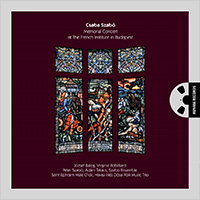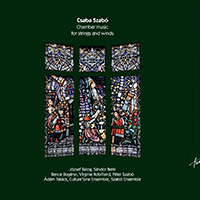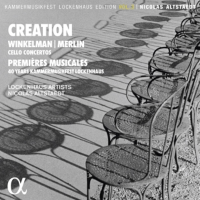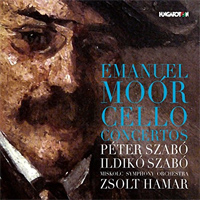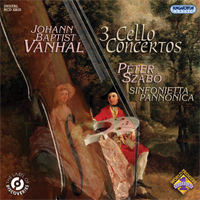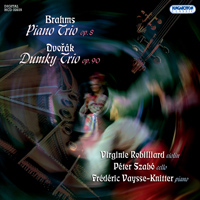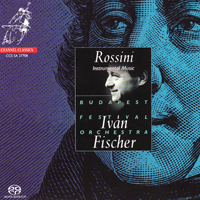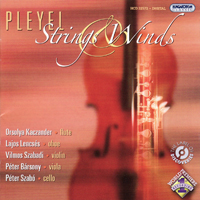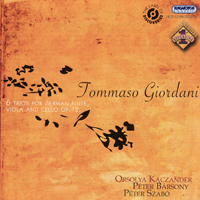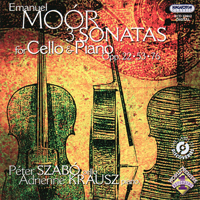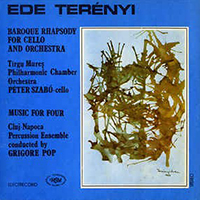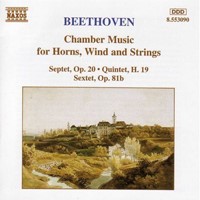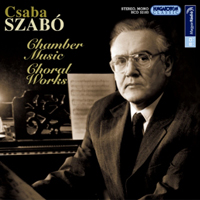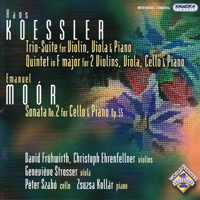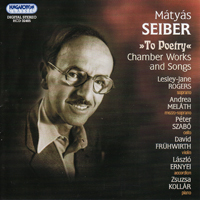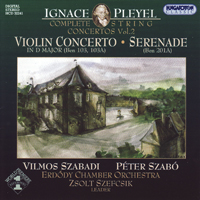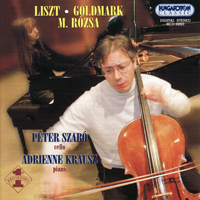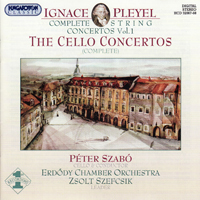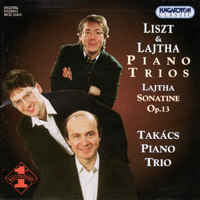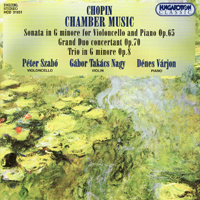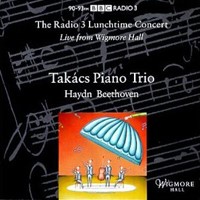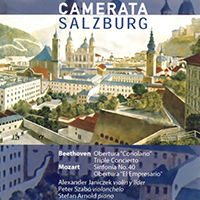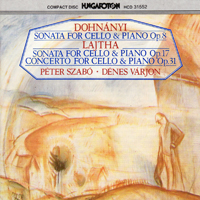Lajtha-premier in the Wigmore Hall in London
Lajtha and London
László Lajtha (1892-1963) was a composer, a Kossuth prize-winning folk music researcher and the teacher and icon of many great musicians such as János Ferencsik and Vilmos Tátrai.His French-Latin compositional orientation and his close connection with the Parisian intellectuals are well-known facts now. He had close bonds with London as well: he composed music for Georg Hoellering's film, based on a drama in verse by T. S. Eliot, Murder in the Cathedral which was awarded the grand prize of the Venice Film Festival. During the time he was working on this music, from 1947 to 1948 he lived in London with his family – he was wealthy and highly respected. Although in 1948 he was offered a extension of contract, he was so homesick that he chose to return to Budapest, to his home in Váci street (his memory is cherished by a commemorative plaque on number 79). He made no secret of his anti-communist feelings; as a man of character and guts he did not give into the authorities. At the age of only fourteen his passport was rescinded. It was a huge loss for the international world of science and art, which esteemed him very highly - for example, he was the only Hungarian member of the directorate of the International Folk Music Council centred in London.
He had numerous other bonds with England. To mention just a few, it was to Philip Heseltine whom Béla Bartók addressed his letter praising the young Lajtha ("apart from Kodály and Lajtha we do not have valuable composers") and the elder of his two scientist sons, László achieved an exceptional career in England. (The internationally renowned Ábel Lajtha still lives in America.)
E. S. T.
The latest CD of Hungaroton Classics comprising of three Liszt transcriptions and two Lajtha opus is a multiple premier. On the one hand, the full program was recorded for CD for the first time, and on the other hand, it is the first CD appearance of the three magnificent musicians, the violinist Gábor Takács-Nagy, the pianist Dénes Várjon and the cellist Péter Szabó together as the Takács Piano Trio. They produced a CD together in 1996 --with a rarely performed Chopin trio --but not yet as an ensemble. It was due to this request by Hungaroton that they found one another as musicians and decided to continue working together as a trio. Since then, they have been receiving invitations from the most important music centres of Europe.
They have enviable careers also as individuals. Takács-Nagy, who was the first violinist of the Takács Quartet -- a prominent ensemble in the world's musical life, winners of two international competitions --from 1975 to 1992 and played as partner to artists such as Solti, Pauk, Schiff, Rosztropovics and Kremer who is at present the concertmaster of the Budapest Festival Orchestra and the head of the chamber music department of the Conservatoire in Genf. The Transylvania-born excellent cellist, Péter Szabó is also a winner of numerous competitions, he has given concerts in nearly every part of the world, he regularly gives master classes and at present he is the solo cellist of the Camerata Academica in Salzburg and of the Budapest Festival Orchestra. The youngest member is the pianist Dénes Várjon, who, after winning the Géza Anda piano competition in Zürich, toured around half the world and received a Liszt Award; at present he gives fifty-sixty concerts a year and he is also
the teaching assistant of Jenő Jandó at the Academy of Music. The three musicians were on good terms from the start, partly because they all studied with the same tutors György Kurtág, Ferenc Rados and Sándor Végh; therefore they share a similar strive for perfection, or rather, maximalism.
The world premier Liszt-Lajtha album's specialty is also due to its edition. Chamber music is very rare in the life-work of Liszt, while in Lajtha's oeuvre they have the most significant place beside symphonies. The CD contains the transcript version of three very popular Liszt compositions: the IX. Hungarian Rhapsody, the Valley of Obermann in the composer's own adaptation and the Orpheus symphonic poem in the transcript of Camille Saint-Saens rated highly by Liszt. Hearing a Liszt piece in the performance of a violin, a cello and a piano is quite an unusual sensation, but owing to the perfect and elaborate interpretation, it is a true musical delicacy. The real novelty and the 'great encounter' for the listener is evidently the two original Lajtha opuses: the op. 10 Trio Concertante written in 1928 and the op. 13 Sonatina for violin and piano written two years later (the only duo on the album). These two pieces are extremely demanding technically, but they offer great opportunities for the proficient performers, they are rewarding. The two extreme movements are marked by Lajtha as First and Second Concerts. Indeed, we hear the fastidiousness of a concerto in these parts, with long and difficult cadenzas. The middle movement, the ethereal sounding Intermezzo is inserted in between the two trials of strength as a lyrical interval. One usually complains about the technical challenges a Lajtha piece presents and claims that a really high level performance requires an almost unworkable amount of rehearsals. It is undoubtedly polished and difficult to access music but the Takács Trio overcomes all the challenges with a great spirit and it would be hard to imagine a performance any more thorough and captivating, colourful, lively, full of virtuoso and which could display so sharply the inner logic of the piece. Probably even the composer, famous for his (exaggerated) strictness, would speak in superlatives if he heard his Concert Trio and Sonatina in this presentation.
György Pauk on the Takács Piano Trio
György Pauk, the world famous violinist living in London also attended the concert in the Wigmore Hall. Answering my question, he summed up his opinion: ' Although it is only Gábor Takács-Nagy whom I know well and for a long time, I do appreciate all the three young musicians and I can only say, I am delighted with them! This was a most outstanding chamber music performance. In a piano trio, the relations are different from that of a string quartet, where the first violinist has a primal role. Here, in most of the cases, the piano has to take the role of a leader, which was fully accomplished by Dénes Várjon. It is important to highlight this, because he is the youngest member. They played together in a perfect harmony and symbiosis. I think they have great future prospects together. I found the selection of pieces very good, especially that they put Lajtha on the program, whose works would worth being performed more frequently. The Concert Trio is a very well-written opus, which gets embedded into one's memory immediately because the great virtuoso concerto-like cadenzas in the fast movements are astonishing and the intimate slow movement is really touching.E. S. T.
Our appreciation grows even further once we get to know that they played the Concert Trio from a manuscript! Unfortunately, this is among the Lajtha pieces which has never been published. The copy of the manuscript was placed at the musicians' disposal by Dr. Ildikó Lajtha, the administrator of the estate. Ildikó Lajtha puts great effort into providing the deserved place for the oeuvre of her uncle in the Hungarian and international musical life. After she had discovered the reprint version of the Country of Games, a collection containing musical games for children, she had the score of two compositions published, those of the Six pieces for a piano and the X. quartet. The popularity of the Concert Trio would also increase if someone would undertake the process of publishing a printed edition instead of having the artists decipher the dense musical text from a manuscript.
Fortunately the works of Lajtha are appearing on CDs in succession. Hungaroton has released the material of two old black discs in a CD format (one of them contains two symphonies with Ferencsik, the other has choral pieces and the X. symphony on it), and ever since they keep coming forward with newer and newer recordings, like the mass of Fríg Lajtha (Missa in diebus tribulationis) with conductor Kálmán Záborszky and a selection of flute chamber pieces with István Matuz. The disc of the quintet with two harps and the miraculously beautiful Three nocturnes are already in preparation, and the Marco Polo enterprise will finish up the grand venture of publishing the symphonic oeuvre with the Pécs Symphonic Orchestra, conducted by Nicolas Pasquet.
As I learned from the artists, the next CD of the Takács Piano Trio - also produced by Hungaroton Classics – will also contain a Lajtha piece again, namely the piano quartet with Sándor Papp violist. Considering that Dénes Várjon and Péter Szabó already made a joint Lajtha - Dohnányi album in 1993, it becomes clear that these musicians give high priority to make the undeservedly neglected Hungarian composers better known and they work hard for this noble goal. The Liszt-Lajtha album is also special because it is the first time the audience could get hold of the CD from one of illustrious concert halls in the world, the Wigmore Hall in London. The minute the CDs were put in boxes, a plane carried them into the English capital. The concert in the evening of the 27th March was welcomed by a full house and unanimous success. The program of the concert slightly differed from that of the CD: it started with Beethoven's op. 1 piano trio in C minor and was closed with Schumann's op. 63 trio in D minor. The two German compositions framed the two Hungarian ones, the Concert Trio by Lajtha and the Saint-Saens transcript for Liszt's Orpheus.
Lajtha's Concert Trio had never been performed in the United Kingdom before that. This fact directed more intensive attention to his piece and having heard the ovations our unbiased opinion was that the English audience welcomed him. More correctly, they welcomed him again - as many parts of his life's work had been performed by excellent artists in the UK during the composers lifetime, even at times when here in Hungary it was a politically dangerous decision to perform his pieces. The Takács Piano Trio does not rest satisfied with the London premier of the Concert Trio and the album release. They will perform the piece four times in Switzerland during the following months and they plan to keep it in the repertoire even after that. Maybe the ice will finally break and the anniversaries will not be the only times when we can listen to his music...
Bechstein Hall --Wigmore HallIn the case of chamber music, the Wigmore Hall in London is THE concert hall. This is the most elegant, famous, long-standing hall with the best acoustics and apparently it is visited by an especially fastidious audience. It belongs to the best concert halls, not only in England, but in the whole world. The German piano-maker firm, the Bechstein had it built next to its show rooms on Wigmore street, they named it Bechstein Hall and designed it particularly for chamber music and piano concertos. Among others Busoni and Ysaye were the performers at the opening concert on 31 May 1901. In 1916, during the First World War, the firm was liquidated after long bankruptcy proceedings and everything was sold (for ridiculously low prices) at auctions, including the show rooms, the offices, the furniture, the pianos, as well as the all-marble concert hall fittings It was re-opened finally on 16 January 1917, this time under the name Wigmore Hall.
The greatest artists gave concerts here, like Sarasate, Rubenstein, Casals, Britten, Elisabeth Schwarzkopf, Dinu Lipatti, Jacquline du Pré --just to pick some of the names randomly. Approximately four hundred concerts are organized every year in the Wigmore Hall, it was the favorite venue for many chamber music composers. The Takács Piano Trio played here on 27 March for the second time and they made their third time on 26 April. This latter concert was broadcast live by the BBC Radio 3.
E. S. T.
Emőke Solymosi Tari
Translation by Susan Kapás
Gramofon
May 1999
The first CD of the Takács piano trio


